
All categories
Featured selections
Trade Assurance
Buyer Central
Help Center
Get the app
Become a supplier

(46945 products available)






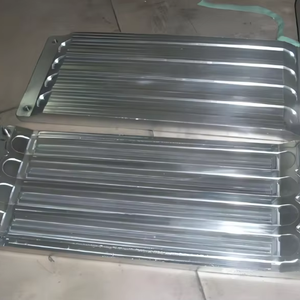







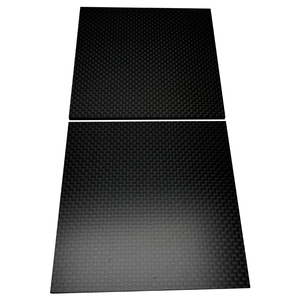
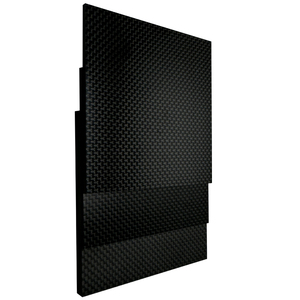

























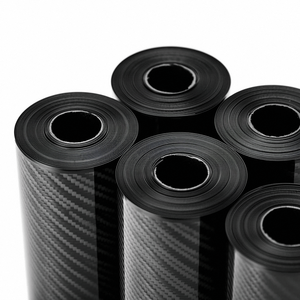

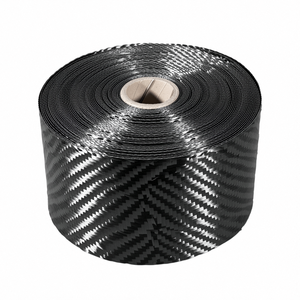







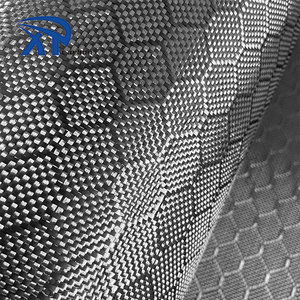
Twill carbon fiber
Twill carbon fibre weave is one of the most well-known and popular carbon fibre textiles due to its strength and flexibility. The twill weave pattern is characterized by its diagonal lines which give the material a visible textured surface. In the case of carbon fibre, this means that individual strands are woven over and under each other in a diagonal pattern, unlike the plain weave where strands are woven in a lockstep fashion. This allows the carbon fibre to conform to complex shapes much easier. This enriched work of carbon fiber cloth makes it more ductile than plain carbon fiber cloth, thus minimizing brittleness. That is why carbon fiber twill is widely applied in high-end sectors like automotive, aerospace, and sports equipment. They basically prefer components that need high strength-to-weight ratios and durability.
Plain carbon fiber
A simple carbon fiber cloth has a basic and traditional grid-like structure. It is manufactured by weaving carbon fiber strands in a straightforward over-and-under pattern. This results in a textile-like material that has a very sleek and uniformly smooth surface. Each strand of carbon fiber is tightly woven to ensure even distribution of stress across the material. Even though the tensile carbon fiber fabric looks simple in its design, it is very strong and stiff. It also has a high resistance to bending. The rigidity thus makes it ideal for use in structural applications. These might include aerospace components, automotive parts, and sporting goods. Simple carbon fiber also shows resistance to extreme temperatures and does not conduct electricity.
Satin carbon fiber
Satin carbon fiber has a unique and recognizable aesthetic look. It has a very smooth and luxurious finish unlike its plain and twill counterparts. It comes from how the carbon fiber strands are woven together; over-and-under patterns are slightly modified from the plain weave. This creates a surface that is noticeably shiny and soft to touch. A satin weave uses fewer intersections per inch compared to plain weave, which causes more carbon fiber strands to be visible on the surface. This not only gives the satin carbon fiber a better visual appeal, but also maintains most of the fiber's strength. Satin carbon fiber is highly appreciated in several areas such as high-end automotive interiors, military gear, and naval equipment. This is due to its combination of aesthetic properties and structural functions.
Hex weave carbon fiber
Hex weave carbon fiber features an innovative pattern that closely resembles a honeycomb or hexagonal shape. This distinctive design isn't just for aesthetics; it plays a significant role in enhancing the material's functional properties. By using hexagonal carbon fiber, manufacturers can achieve a level of flexibility and strength that is unparalleled when compared to traditional weaves. The hexagonal pattern allows the carbon fiber to conform to more complex shapes and surfaces without compromising its integrity. This makes it a popular choice in numerous fields. These fields include aerospace components, sporting goods, and even fashion items where both form and function are critical. Beyond its structural advantages, the unique look of hex weave carbon fiber adds a modern and sleek appeal to any product.
Lightweight
Carbon fiber weaves are extremely light and very strong at the same time. The structures take up comparatively much less space than those made of steel or aluminum. Even though they weigh less, the woven patterns provide tremendous strength and rigidity. Their lightness leads to easier maneuverability and reduced overall bulk in whatever application they are used. Pursuant to this, carbon fiber weaves have widely found their application in automobile and aviation fields. Here performance and fuel economy rely heavily on how much the vehicle or aircraft weighs.
High strength
Carbon fiber weaves are famous for their remarkable strength. They have a very high strength-to-weight ratio. This means that the materials are very strong even though they are easy to carry. The weaving patterns add to the overall tensile strength and stiffness of the carbon fiber. Thus, making it resilient to bend, stretch, or even break under extreme conditions. That is why sporting goods, civil engineering, and aerospace engineering prefer these weaves. They ensure durability and give less frequent need for repair or component replacement.
Chemical resistance
Carbon fiber weaves are almost not at all by chemical processes. It does not degrade, corrode, or lose structural integrity when exposed to chemicals like acids, alkalis, and solvents. This property comes from the fact that carbon composites are very often used in chemically challenging environments. Such environments include marine applications, chemical processing plants, and even medical devices. Carbon fiber's resistance to chemical reactions certainly extends its lifespan as well as improves its reliability to do a specific function.
Thermal resistance
Carbon fiber weaves are effective at resisting heat. They experience very minimal expansion when the temperature changes. This makes them ideal to use in conditions within which extreme temperatures are inevitable. Carbon fiber weaves are applied in industries like aerospace with critical components such as rocket nozzles and brakes. Most of the time in these industries, components have to give in to supersonic speeds and considerable friction.
Versatility
Carbon fiber weaves come in various forms to suit given applications better. There is the plain weave, twill, and satin weave that provide different flexibility and molds to the material's thickness. This versatility allows carbon fiber to be utilized in a wide spectrum of industries. These industries include aviation, motorsport, civil construction, and even consumer electronics and fashion. The adaptability of carbon fiber weaves, which can be tailored to a given purpose, makes it a highly sought-after material in design and engineering dilemma resolutions.
Aerospace industry
Carbon fibre weaves play a very important role in the aerospace industry. We also posit that they help produce structures that are incredibly strong yet light in weight. For instance, woven materials like twill and satin provide the rigidity and durability needed to construct airframes, wings, and engine components. Their design also allows them to easily conform to complex shapes, meeting the aerodynamic requirements without adding as much weight as steel or aluminum.
The hex-weave carbon fiber is gaining popularity for its superb mechanical properties. It is now commonly used to design satellites and spacecraft. The unique patterns improve the material's structural integrity while enhancing its aesthetic appeal. Overall, carbon fiber weaves have contributed to improved fuel efficiency, which comes with better performance and lower operating costs for modern aircraft, too.
Sports equipment
Plain, twill, satin, and other carbon fiber weaves have become essential materials when manufacturing an array of sporting products. The weaves provide unmatched strength and lightness. As such, bicycle frames, tennis rackets, and golf clubs benefit from the rigidity carbon fiber offers while not adding excess weight. This leads to improved performance, increased speed, and enhanced maneuverability for athletes. Also, different types of carbon fiber weaves allow designers to fine-tune the stiffness and flexibility of the equipment. They, therefore, ensure that the end products meet particular sporting demands. With their aesthetic appeal, carbon fiber adds a sleek, modern feel to these high-end products further justifying their use.
Automotive applications
Carbon fiber weaves are widely used in the automotive industry to manufacture components that level up in strength, weight, and fuel economy. Various carbon fiber components like body panels and chassis utilize the inherent advantages of these weaves for superior performance. For instance, twill and satin weaves provide structural integrity and enhance the car's design. They do this by allowing the materials to conform to aerodynamically desirable shapes.
Moreover, the hex-weave carbon fiber is preferred for luxury applications due to its attractive finish. Carbon fiber weaves reduce overall vehicle weight as they improve fuel efficiency without compromising safety or strength. Simply put, carbon fiber weaves are a staple in race cars and commercial vehicles alike. They help provide a desirable blend of efficiency and performance.
Medical devices
The carbon fiber weaves are internalized in the medical field, especially in medical imaging equipment and prosthetics. Their incredible strength and resistance to corrosion create durable and lightweight frames for prosthetic limbs. This ensures patients receive comfort with high functionality. Twill and plain weaves are further incorporated into advanced surgical tools offering precision while minimizing fatigue on the medical professionals using them.
Besides, radiolucent properties of carbon fiber allow imaging modalities like X-rays and CT scans to obtain clear images without interference. Carbon fiber's unique combination of strength, versatility, and compatibility with a myriad of medical applications has revolutionized patient care and surgical procedures.
Consumer electronics
Carbon fibre weaves have become a staple design and engineering elements in consumer electronics. Especially in cases for laptops, smartphones, and other portable devices, carbon fiber offers an unparalleled strength-to-weight ratio. This protects devices from impacts and makes them lightweight for better user experience. Weaving patterns like satin and hex weave enhance the material's aesthetic appeal by giving it a sleek, modern finish that appeals to consumers.
They come with added functionality, providing electromagnetic interference shielding. Thus, ensuring the devices work efficiently. Overall, these weaves have contributed to durability, style, and premium feel of carbon fiber gadgets.
Define purpose
Deciding the intended use of the carbon fiber weave will be critical. For example, high-strength applications such as aerospace or automotive components will call for a weave pattern that offers more rigidity and strength, like plain weave. If the application is to be in products requiring flexibility and better conformity to shapes, go for weaves like twill or satin. Simply put, clarify the end application first before making a selection. This will narrow down the options considerably.
Consider mechanical properties
Different carbon fiber weaves come with varied mechanical properties that impact performance. Simple carbon fibers offer supreme tensile strength and stiffness because of their tightly organized structure. Twill carbon fibers, on the other hand, provide better flexibility and easier conformation to complex shapes. Satin carbon fibers also have superior aesthetic and functional surfaces and properties. Weigh the essential factors by giving consideration to the stiffness, tensile strength, and flexural strength that performance in the specific aim is dependent upon. This will help in choosing the most suitable carbon fiber weave.
Assess environmental factors
Examine the environmental conditions that the carbon fiber weave will face, such as exposure to chemicals, moisture, or extreme temperatures. Some weaves are very much suitable for harsh environments due to their chemical or thermal resistance. This makes them ideal to use in areas like marine or industrial settings. Assess the durability and resistance of the carbon fiber weave to such environmental stressors. This should be done in the context of the specific conditions it will be exposed to, thereby ensuring longevity.
Budget considerations
Carbon fiber has its price range, depending on the type of weave and quality. It also varies by the type of fibers used and manufacturing processes, too. Some weaves can be quite expensive, especially when the fabric has been engineered for high-performance uses. Weigh the costs against the performance advantages that a given carbon fiber weave offers. This will require consideration of both immediate and long-term factors based on the project requirements. Basically, balance performance needs with budget constraints to ensure the selection meets the financial limits without compromising functional requirements.
A1. Cutting carbon fiber cloth can be done, but care must be taken so as not to damage the material. The best tools for use on the cloth are sharp utility blades and shears. Jigsaw blades with a fine tooth also work well. The cloth can also be pinned or glued to the work surface to minimize movement. In case of excess dust that is produced during cutting, this could be harmful; thus, go for a dust mask that will prevent the dust from being inhaled at any cost.
A2. Carbon fibre is common in some household items like kitchenware that requires strength, such as knives and spatulas. Some parts of home appliances, like vacuum cleaners and hair dryers, also have carbon fibre. It is also used in sports equipment like bicycles and tennis rackets. Other places where carbon fibre can be found in the household include car parts, cameras, tripods, and musical instruments like violin bows for strength and lightness.
A3. Overlapping carbon fiber cloth is a common practice when a thicker laminate or repair patch is needed. Careful alignment and controlled overlapping ensure that the fibers retain their strength properties. Just ensure the excess material is well saturated with resin during lamination to prevent weak spots.
A4. The carbon fibre wraps go through an advanced bonding process. This allows them to effectively cling onto surfaces for an extended period in a wide range of conditions. Regardless of the weather and temperature changes, the wraps have proven strong and durable. They also display resistance to peeling, fading, and wear. The level of maintenance and care of the wrap will help improve its long-lasting nature.